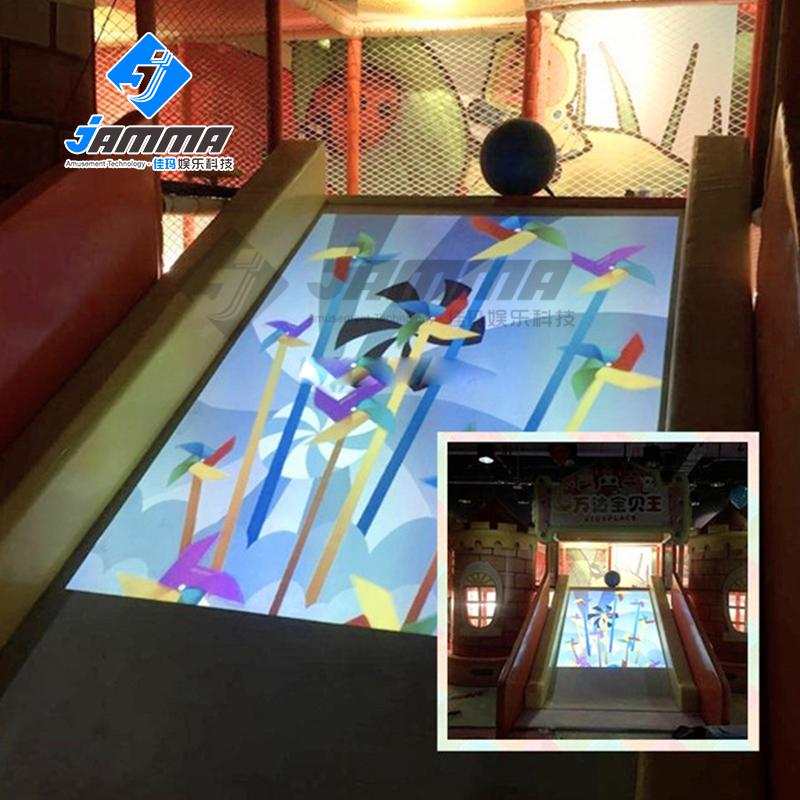Slide interactive projection system
Here are some key components and features of an interactive projection system
An interactive projection system, often referred to as an interactive projector or interactive projection display, is a technology that combines the capabilities of a traditional projector with interactive features. It allows users to interact with projected images or content using various input methods such as touch, gestures, or pens. These systems are commonly used in educational settings, business presentations, and interactive installations.
- Projector: The core of the system is a projector that displays images or content onto a surface, such as a whiteboard, screen, or wall. The quality of the projector’s display is crucial for a clear and bright interactive experience.
- Interactive Surface: The surface where the content is projected becomes interactive through the use of technology. This can be a whiteboard, a projection screen, or even a regular wall.
- Interactive Pen or Stylus: Users often interact with the projected content using a specialized pen or stylus that can be detected by the system. These pens are equipped with sensors that communicate with the projector to track their position and actions on the interactive surface.
- Touch or Gestures: Some systems allow for touch interactions where users can directly touch the interactive surface to interact with the content. Others rely on gesture recognition, where hand movements or gestures are detected by cameras or sensors.
- Interactive Software: To facilitate interactions, interactive projection systems are equipped with software that interprets and responds to user inputs. This software can offer various features, such as drawing tools, virtual whiteboards, multimedia integration, and more.
- Calibration: The system typically requires calibration to ensure accurate tracking of the pen, touch, or gestures on the interactive surface. This calibration aligns the projected image with the interactive elements.
- Multi-User Support: Many interactive projection systems are designed to support multiple users simultaneously, making them suitable for collaborative work and interactive group activities.
- Applications: These systems are used in various applications, including education (interactive classrooms and learning environments), business (interactive presentations and collaboration), exhibitions (interactive displays), and more.
- Connectivity: Interactive projection systems may offer connectivity options, allowing users to connect their devices, such as laptops or smartphones, to the system for content sharing and collaboration.
- Mobility: Some interactive projectors are portable and can be moved to different locations, providing flexibility in setting up interactive spaces.



Comments
Post a Comment